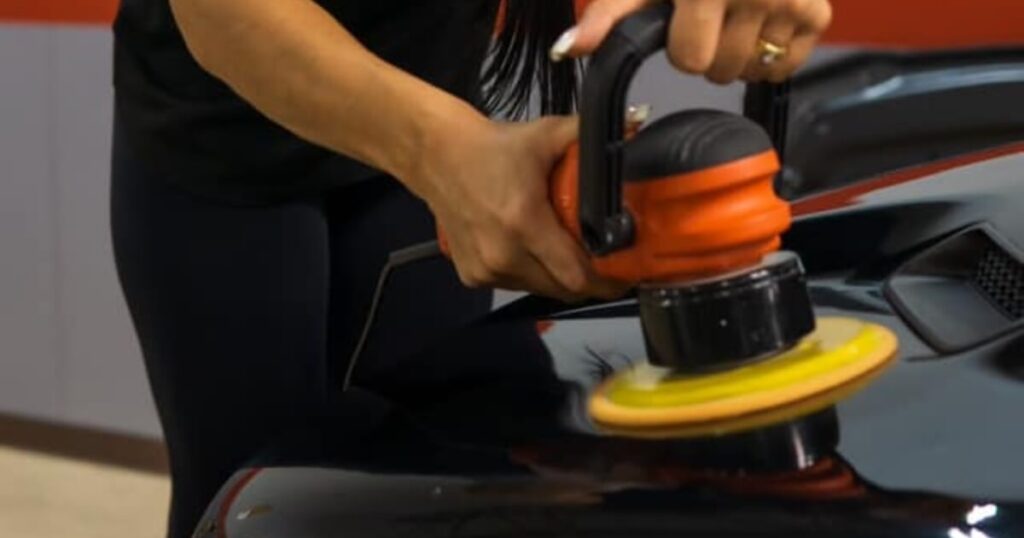Car accidents are always unexpected and unpleasant experiences. Not only can they damage your vehicle, but they can also be a hassle. If you find yourself in a situation where your car needs a new paint job after an accident, it’s essential to understand the process. Here’s a complete guide to help you get your car painted and back on the road.
When to Call the Auto Body Repair Shop
After an accident, it’s vital to assess the damage to your vehicle before deciding whether to call an auto body repair shop. If your car has only suffered minor dents or scratches, you can fix it yourself with a touch-up pen or a DIY kit.
However, it’s time to call the professionals if the damage is more significant, such as a dent that can’t be popped out or the paint is chipped or cracked.
It’s essential to choose an auto body repair services shop that you trust and that has a good reputation. You can ask for recommendations from friends or family or search online for reviews. Look for a shop that has experience with painting cars and one that uses high-quality paint and equipment. Once you have chosen a shop, you can schedule an appointment to inspect your vehicle and receive an estimate for the repair cost.
Will Paint Damage Cover by Insurance?
Whether or not your car insurance covers paint damage will depend on the specific terms of your policy. If you have collision coverage, your insurance typically covers repairing your car after an accident, including painting. However, if you only have liability insurance, you may have to pay for the paint job yourself.
It’s essential to check with your insurance provider to see what is covered under your policy. You should also ask the auto body repair shop if they work with your insurance provider. Many shops have relationships with insurance companies and can help you navigate the claims process.
What’s the Cost of Car Paint?
The cost of painting your car after an accident will depend on the extent of the damage, the type of paint used, and the labor required. The average cost of a primary car paint job ranges from $500 to $3,000. However, the price could be much higher if your car has suffered significant damage, such as from a major collision.
You should receive an estimate from the auto body repair shop before any work is done. This estimate should include the cost of labor, materials, and any additional charges, such as fees for removing old paint or fixing rust spots. If the forecast is higher than you expected, you can ask the shop to explain the charges and try to negotiate a lower price.
Will the Paint Match Your Car?
One of the most common concerns people have when getting their car painted after an accident is whether the new paint will match the existing paint. This is especially important for cars with unique colors or finishes.
Fortunately, modern paint technology has made it possible to match almost any color. Auto body repair shops use color-matching software to find the exact formula for the paint that matches your car’s original color. This ensures that the new paint will blend seamlessly with the old paint.
It’s essential to choose a shop that has experience with color matching and uses high-quality paint. Some shops may use lower-quality paint that doesn’t match as well, which could result in a noticeable color difference.
Blending the Paint
In some cases, more than simply painting the damaged area of your car may be required. If the damage is extensive or the original paint has faded or oxidized, blending the new paint with the old paint may be necessary.
Blending involves applying the new paint to a larger area than just the damaged area. It helps to create a seamless transition between the old and new paint. The goal is to ensure no noticeable differences in color or texture between the two areas.
Blending requires skill and expertise, so choosing an auto body repair shop with experience with this technique is essential. The shop should also use high-quality paint and equipment to ensure the best possible results.
In addition to blending, the shop may also need to do some prep work before painting your car. It can include sanding down any rough spots, filling in any dents or scratches, and applying a primer to help the new paint adhere to the surface. The shop should also clean and degrease the car’s exterior to ensure no contaminants could affect the paint job’s quality.
After applying the paint, the shop will typically apply a clear coat to protect it and give it a glossy finish. The clear coat also helps to protect the paint from UV damage, which can cause the paint to fade over time.
Conclusion
Getting your car painted after an accident can be a stressful experience, but it doesn’t have to be. By following this complete guide, you can ensure that your car receives a high-quality paint job that looks great and lasts for years.
Remember to choose an auto body repair shop you trust and have experience with painting cars like Dentwerks Auto Hail Repair. Check with your insurance provider to see if paint damage is covered under your policy, and ask for an estimate before any work is done. And remember to ask about color matching and blending to ensure that the new paint matches the old paint seamlessly. With the right approach, you can get your car looking like new again in no time.



